Are you looking for an effective method to manage footnotes in Adobe InDesign? The challenge when working with footnotes is often that they are essential in large projects, but the software sometimes does not provide the desired flexibility. In this tutorial, I will show you step by step how to create, edit, and optimally manage footnotes in Adobe InDesign.
Key Insights
- Footnotes provide crucial support for scholarly and extensive texts.
- The InDesign footnote feature has its limitations, but you can use it effectively.
- Adjustments to character and paragraph styles are essential for a consistent layout.
- There are workarounds to integrate footnotes into tables and much more.
Step-by-Step Guide to Working with Footnotes in InDesign
1. Insert Footnote
To insert a footnote, place the cursor at the location where the footnote should appear. Then go to Type and select Insert Footnote. InDesign will automatically create the footnote for you and take you directly to the footnote field where you can add content.
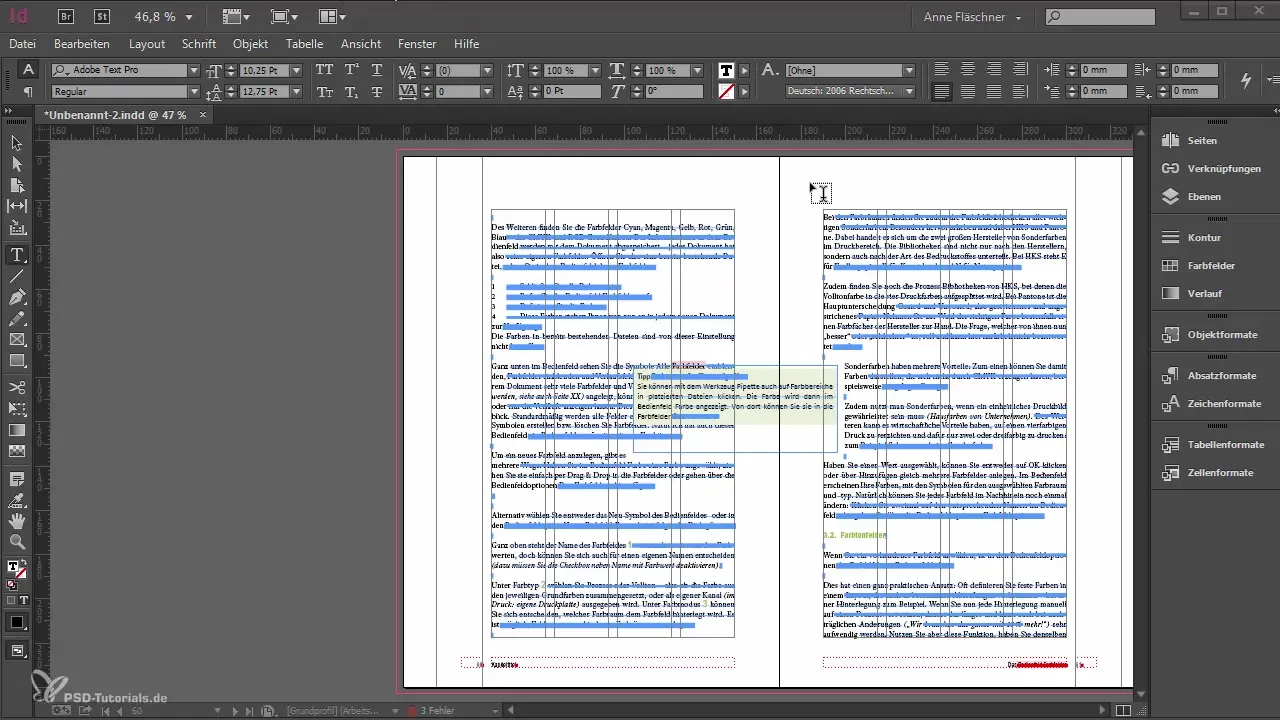
2. Superscript Number Formatting
When you insert a footnote, a superscript number is first added. Note that InDesign does not create an automatic character style or paragraph style for your footnotes. This means you must ensure that the formatting is correct yourself.
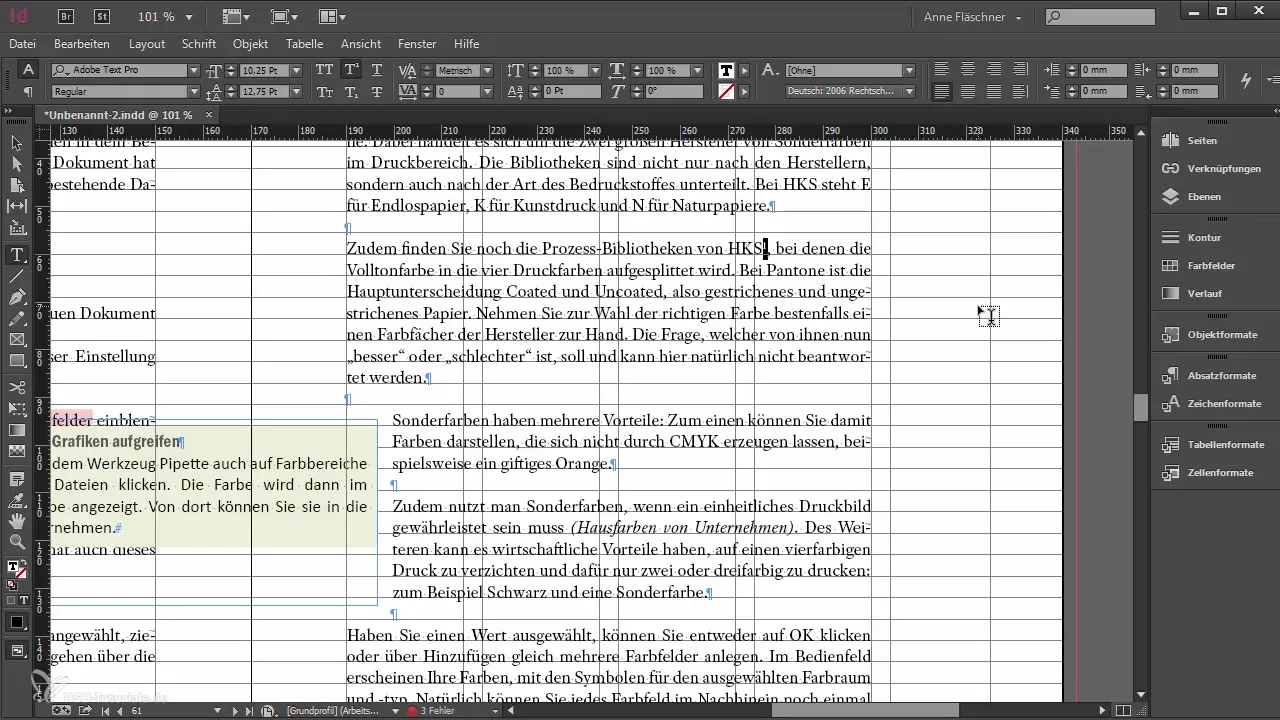
3. Create Formatting Styles
Since there are no preset formats for footnotes in InDesign, you should create a character style yourself. Go to the paragraph and character styles and create a new character style for the footnotes that takes into account the specific requirements of your project.
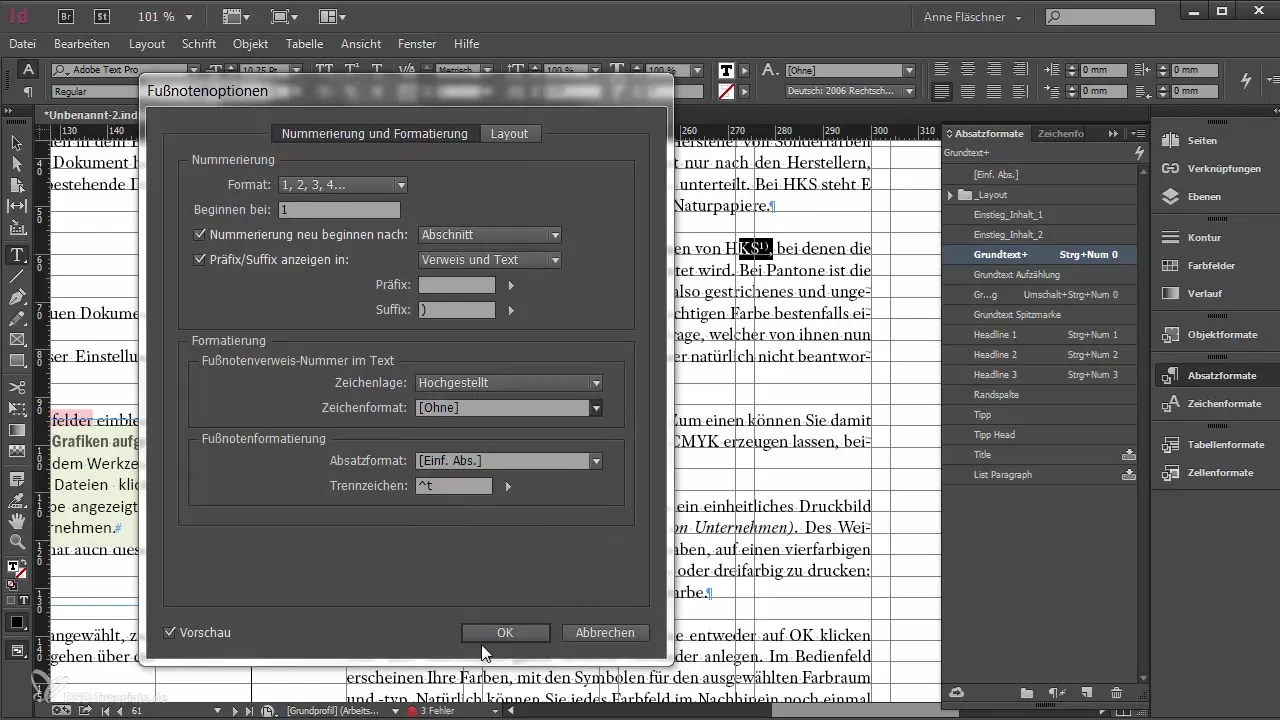
4. Additional Formatting for Footnotes
Create an additional paragraph style for the text of the footnote itself. This is important to ensure that all footnotes look uniform and professional. You can set the font size or other layout options here.

5. Document Footnotes Settings
Take a closer look at the document footnotes options. You can decide whether the numbering for footnotes restarts on each page or per section. The default setting is for numbering to start at 1. Generally, it is more sensible to use numbering per section.
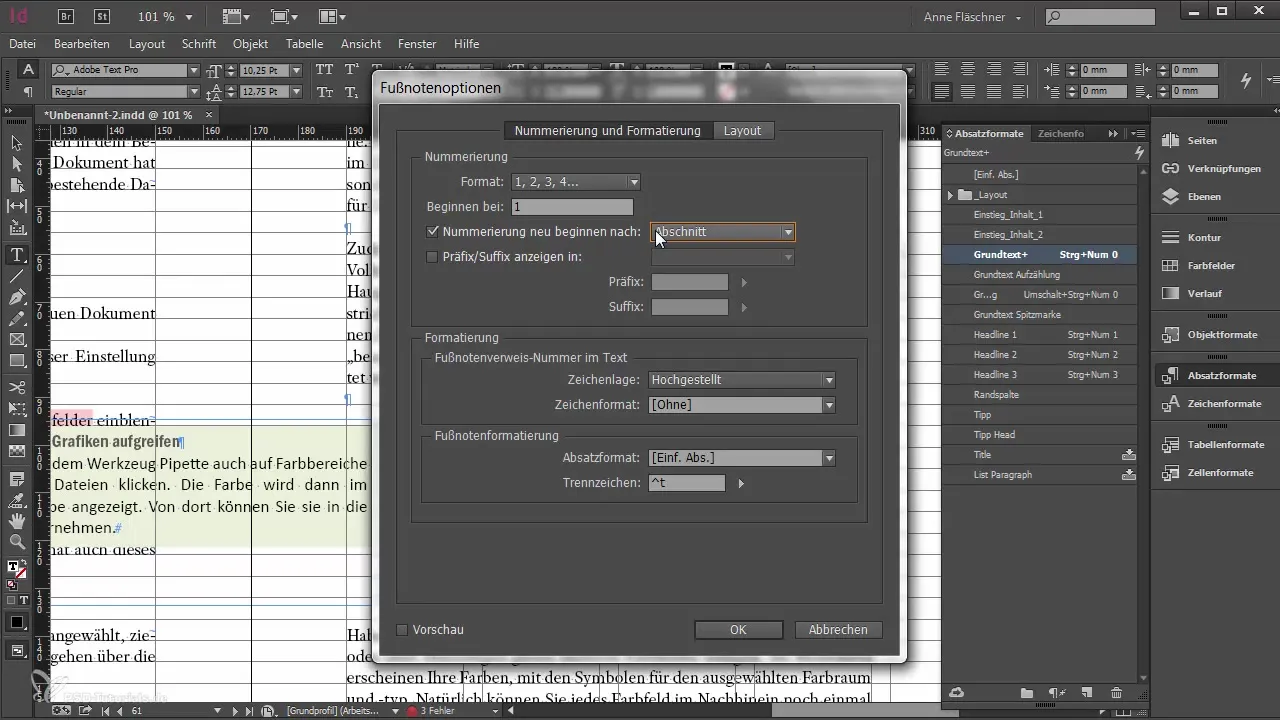
6. Customize Footnote Options
In this step, you can further customize the appearance of your footnotes. Activate the option to display a line over the first footnote and set the width and offset of the line. This gives you a neat appearance.
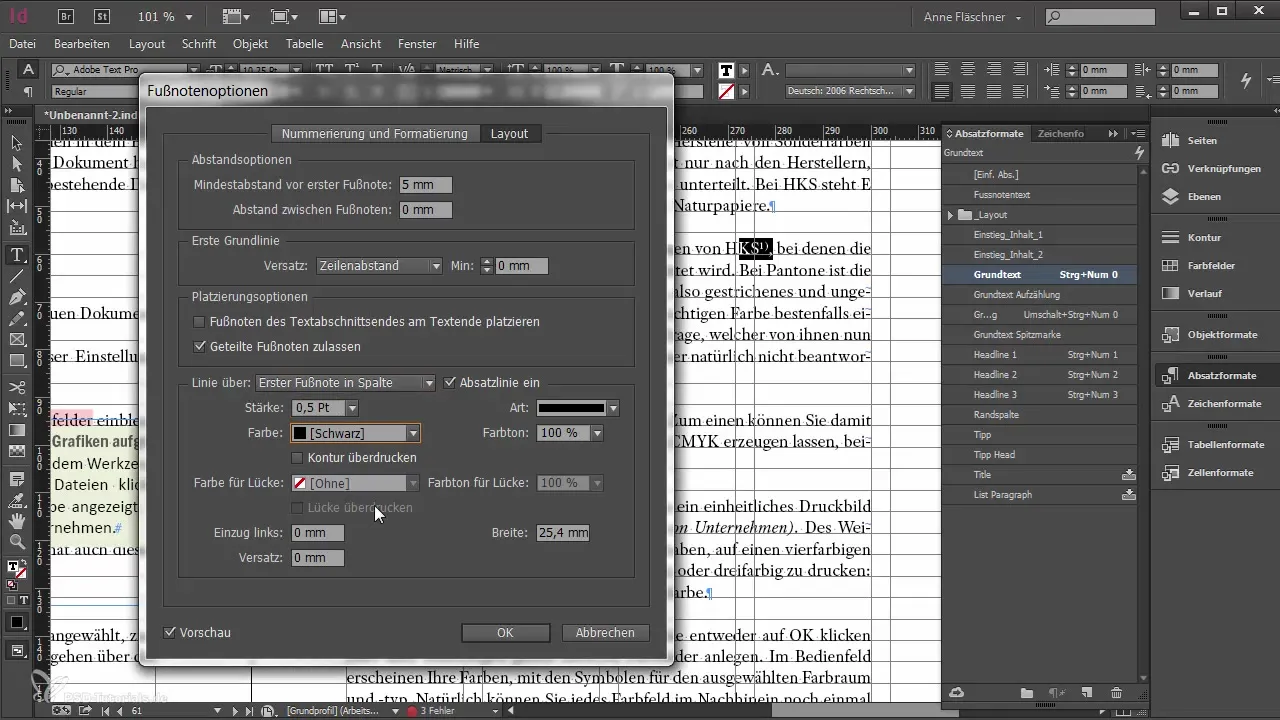
7. Be Aware of Limitations
Unfortunately, there are some limitations to using footnotes in InDesign. For example, you cannot directly insert a footnote in tables. You will need to rely on a workaround here.
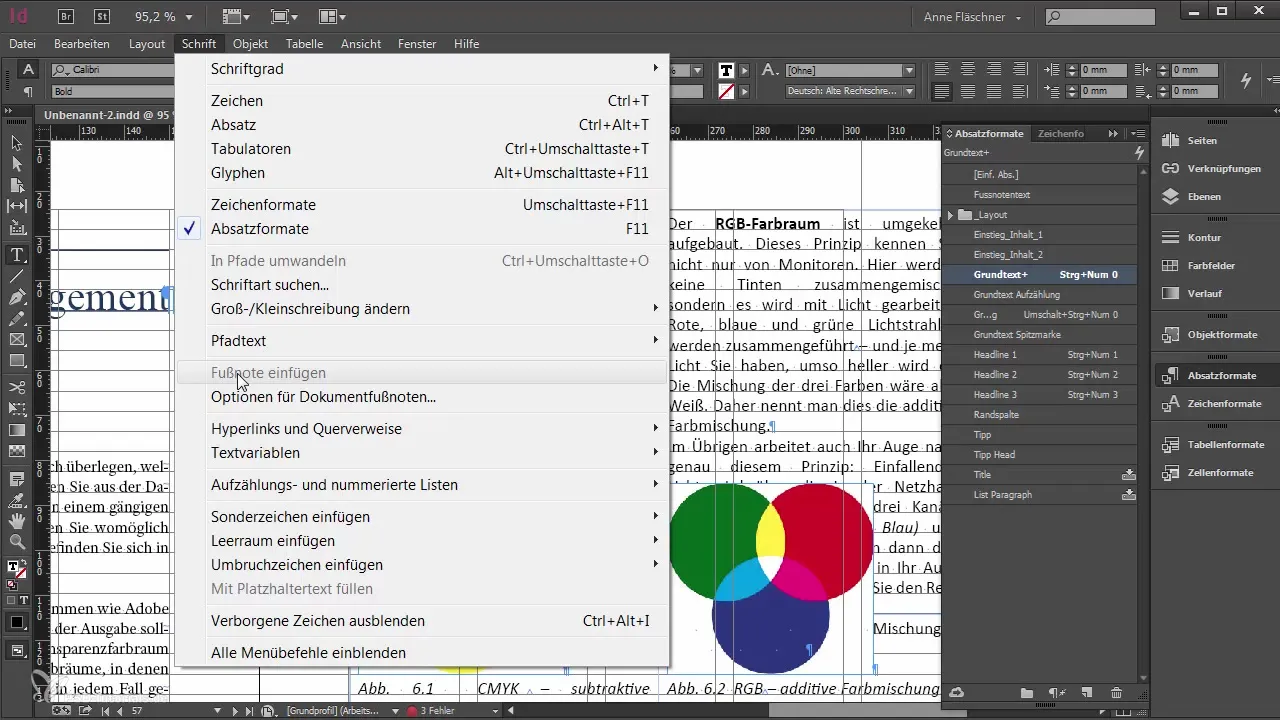
8. Workaround for Footnotes in Tables
To integrate footnotes into a table, you could insert a manual numbering and then assign it a character style for footnotes. This way, you at least get a similar appearance, even though it requires some additional steps.
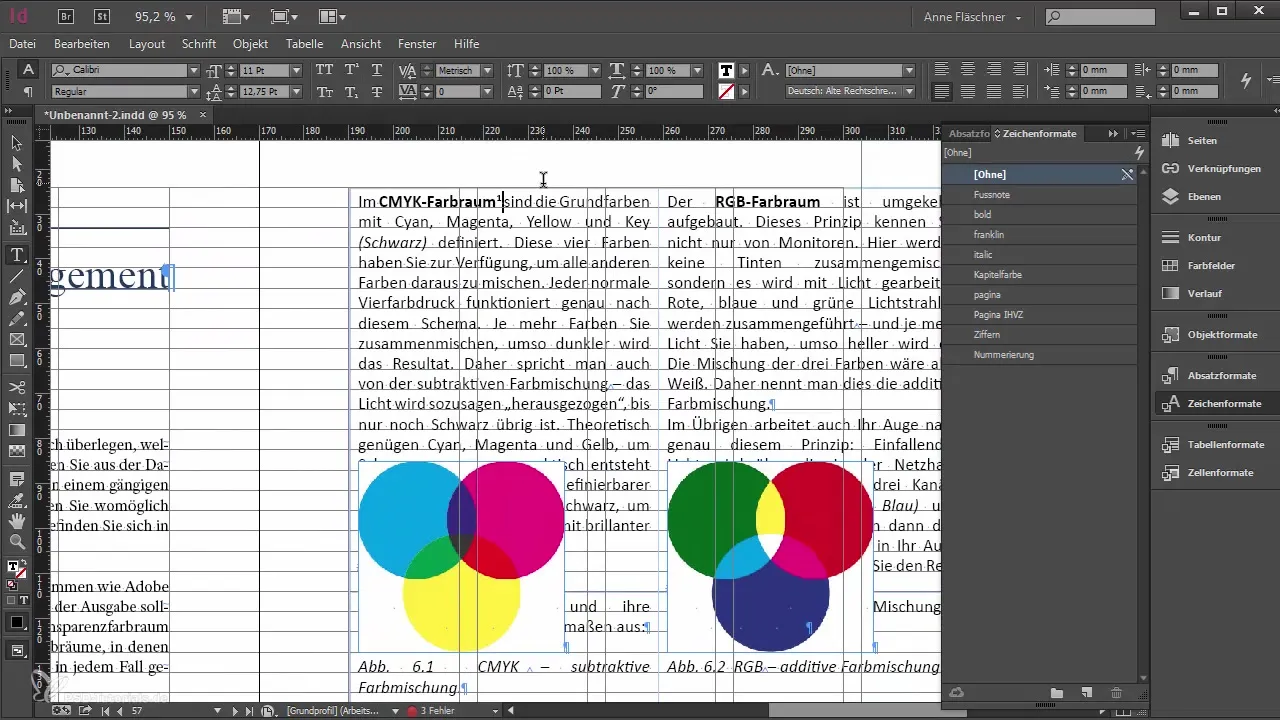
9. Integration of Word Documents
If you already have a Word document that contains footnotes, you can simply import it into InDesign. However, it's crucial that you ensure the footnotes option is enabled in the import dialog to import the footnotes correctly.

10. Adjusting Footnotes After Import
After importing, you may need to make some adjustments since converting footnotes may cause minor errors, such as extra spaces. Also, check the numbering within the frame to ensure it is correct and sequential.
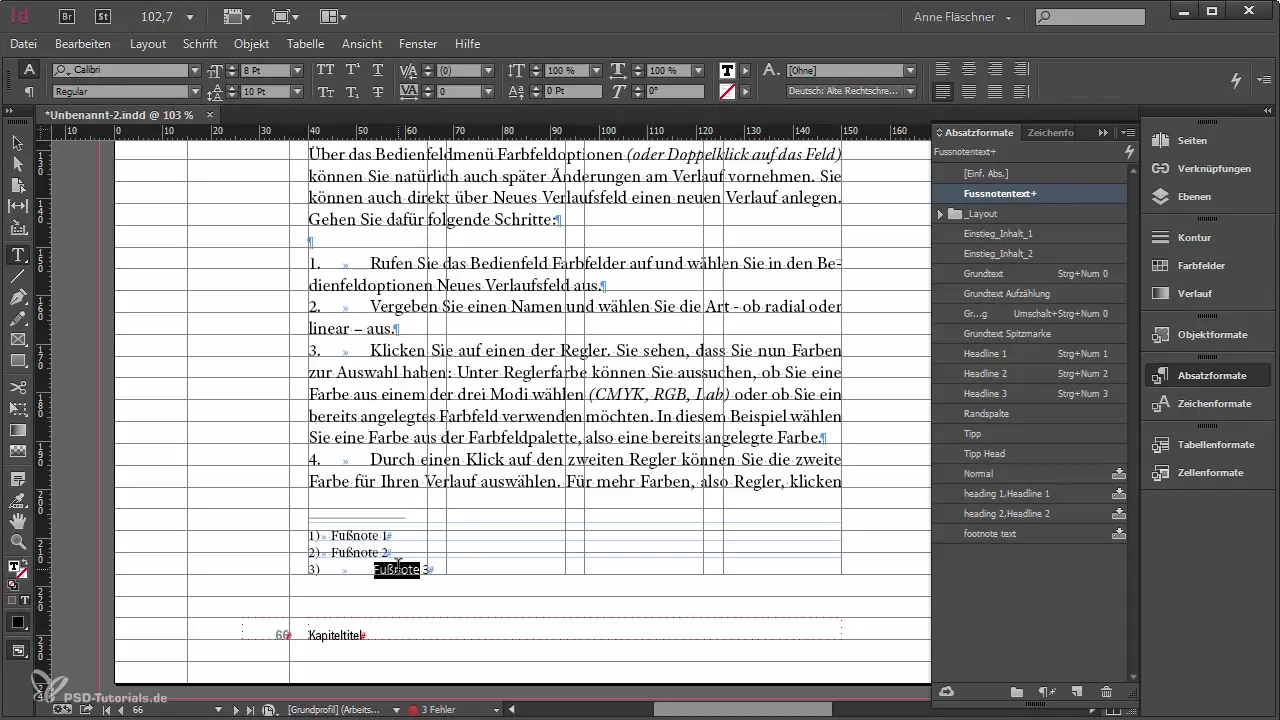
11. Option to Format Endnotes
An effective way to handle all footnotes at once is to convert them into endnotes in Microsoft Word. This allows you to import them into the InDesign document as a block, which facilitates easier placement and formatting.

12. Placing Footnotes Across Multiple Columns
If you are using multiple columns, it is problematic to place footnotes in varying widths. To avoid this, you can format all footnotes in Word before editing them in InDesign. This way, they will stay in place.
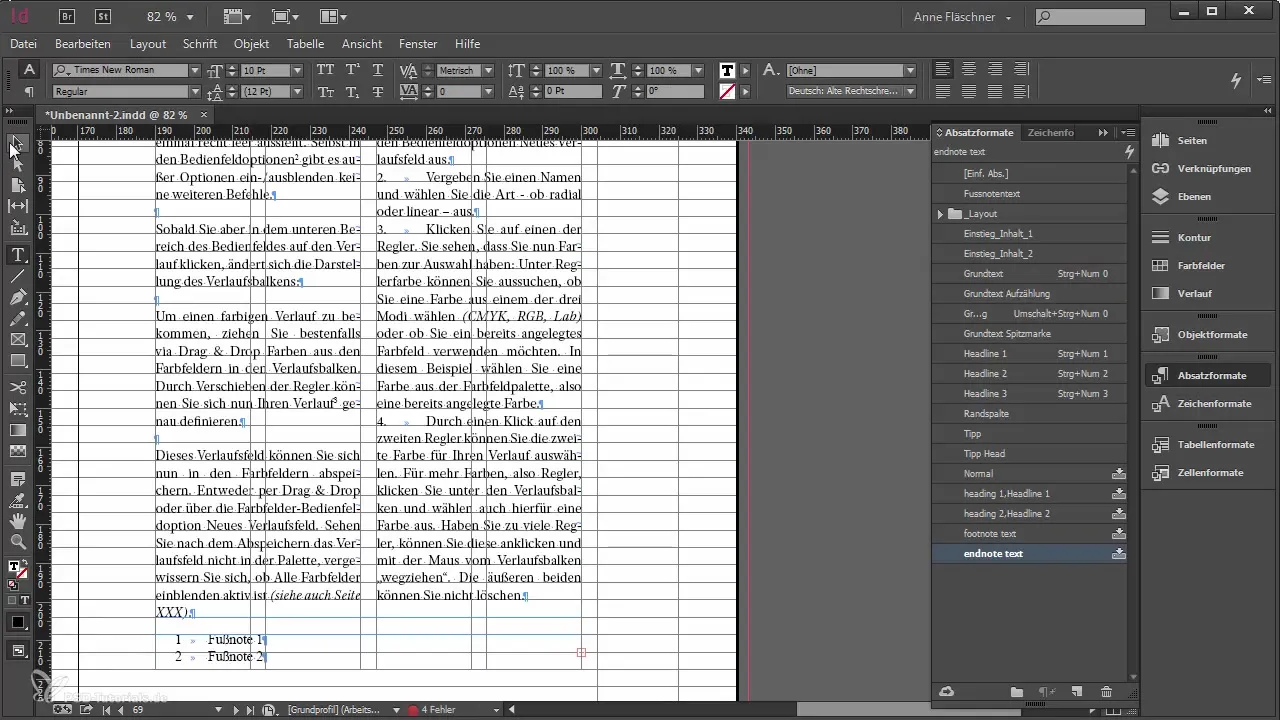
Summary - Optimizing Footnotes in Adobe InDesign
In this guide, you learned how to effectively manage footnotes in Adobe InDesign. Despite the limitations, by creating character and paragraph styles and understanding the import options, you can make the most of this feature. With the right adjustments, your footnotes will be both user-friendly and aesthetically pleasing.
Frequently Asked Questions
What formats do I need for footnotes in InDesign?You need both a character style and a paragraph style for footnotes.
Can I insert footnotes in tables?Unfortunately, you cannot insert footnotes directly in tables; you need to use a workaround here.
How can I import footnotes from Word?Be sure to check the footnotes option in the import dialog.
What is a sensible workaround for table footnotes?You can create a manual numbering formatted with a character style for footnotes.
Is it necessary to manually adjust all footnotes?Generally yes, especially if you are editing imported footnotes.


